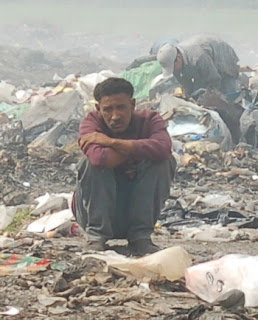
Heaven, in other words.
Is heaven a place of clouds and harps, angels and sunsets, good views and great food?
Or is it the place that is the end point toward which point babies’ smiles, gentle acts, poetry which rends the heart and sweetness that heals the wound?
Perhaps all we can do is trust the signs that God gives us, the moments that allow us to peek into the deeper mystery of goodness.
Today I remembered Lupita, a nineteen year old who finally passed after a long and wasting illness. She lived in a working class neighborhood in
In her last year, as she lost her ability to walk, I managed to find her a wheelchair. When she saw it, she managed a heartbreaking smile.
As she lay dying, one of the hospital social workers asked Lupita if she would give her wheelchair to someone who needed it now.
Lupita told her no, that it was a gift “from Padre Miguel.”
At first I wondered how could Lupita had said such a thing. But upon reflection, I realized that Lupita could not just give away something that was given to her in love. No regifting for this young woman.
As we prayed at Mass yesterday, I thought of how God works. There will be no one to replace Lupita. She has moved on—no more hearing her laughter or enjoying her smile. She won’t be repackaged, reincarnated. No one can replace her, as well it should be, for God doesn’t regift  either.
either.
And yet some essence of her has stayed behind, etched in my heart’s memory, a space aching to be filled, a seventh note waiting to be completed. A hope, I would call it. A joyful hope that one day death’s barrier is shattered by the power of love, and the 144,000 of us will be finally gathered together, once again.








